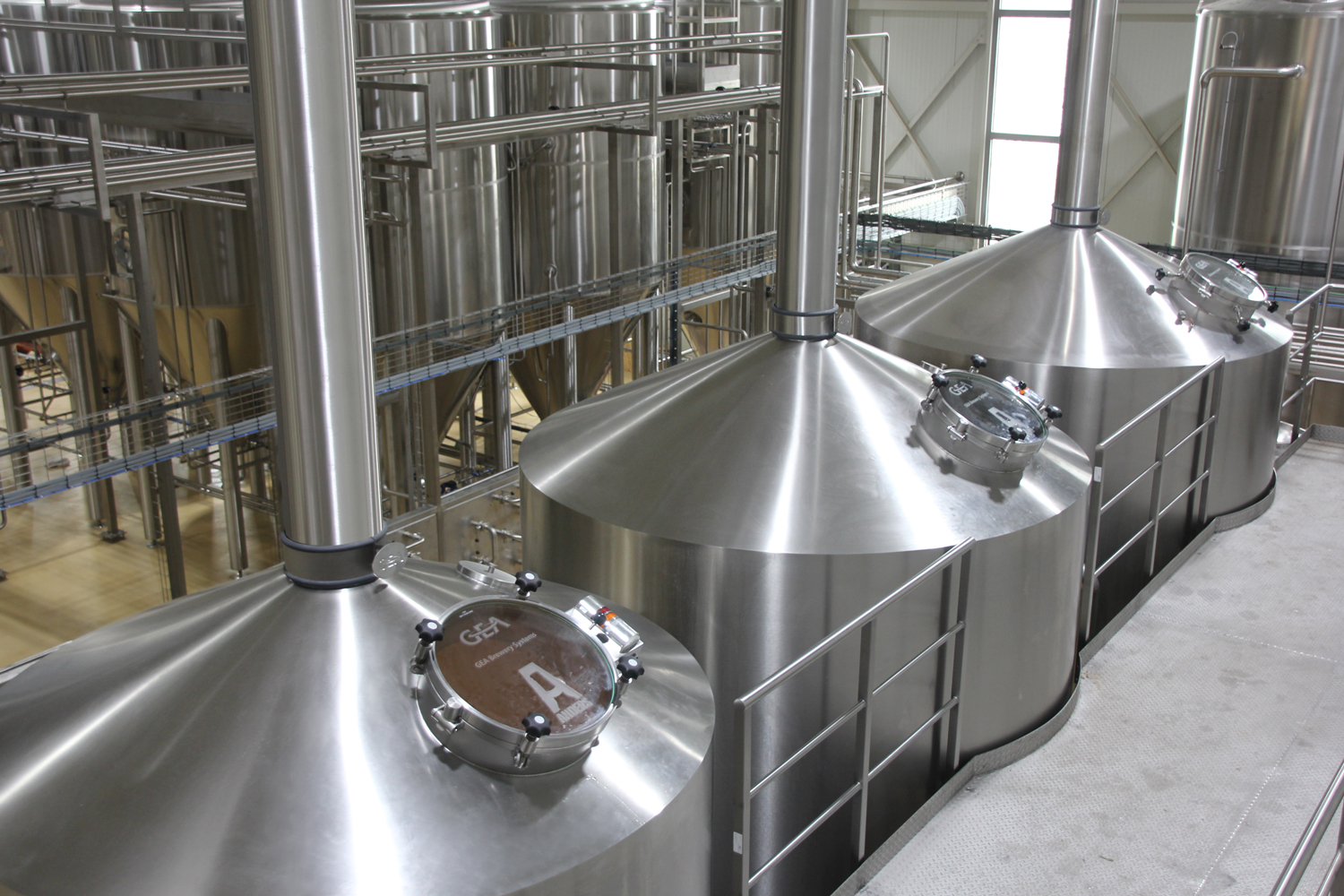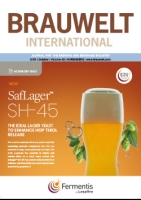
Some reflections on mashing – Part 2
The first part of this two-part article (BRAUWELT International no. V, 2016, pp. 309-311) consists of a detailed discussion of mash parameters and how they can serve as a powerful tool for enhancing wort and beer quality. The skillful manipulation of these parameters provides a highly effective means for compensating for a particular year’s harvest and the natural fluctuations in quality which may occur. Mash parameters also afford brewers more creativity by allowing them to tailor their wort to the needs of a particular beer style through the targeted use of malt enzymes. Selected examples are presented in the second part of this essay to illustrate precisely how to bring these concepts to fruition.
Carbon dioxide is a greenhouse gas, and although significant amounts are liberated during fermentation, at the same time, many breweries purchase large amounts of CO2 for use in their own production processes. The research project “Capturing and Storage of Carbon Dioxide (CaSCaDe)” at the University of Bayreuth is investigating how and to what extent greenhouse gas emissions can be reduced with an adsorptive method for carbon dioxide recovery. In addition, the quality of the recovered carbon dioxide is evaluated. The goal of this project is to make a viable contribution to climate protection while reducing costs and enabling companies to secure their own supply of carbon dioxide [4].
In October 2016, mechanical engineering company GEA delivers its first Craft-Star TM 4-vessel brewhouse to Washington, D.C. The system is scheduled to begin commercial operation early next year. The customer is DC Brau Brewing Company, a highly renowned manufacturer of craft beers in the U.S. capital.
A large surplus yeast tank shot into the air leaving the floor plate and the contents behind. Although not designed for overpressure, the tank was kept at “very slight overpressure” to suppress nuisance foaming. The brewery was unaware of the hazards of compressed air. The accident described in this article serves to illustrate that care should be taken if a tank originally designed for atmospheric pressure is modified to operate at slight overpressure.
Despite the fact that malt quality can undergo fluctuations from year to year, brewers are very reluctant to change their mash schedules for fear of the inscrutable consequences this might have on the quality of their beer. But this is precisely what the process of mashing is all about. Mashing is a highly flexible instrument which affords a brewer the capacity to effectively overcome the challenges of contending with difficult malt. Thus, it offers a brewer the means to effectively compensate for the shortcomings of a particular year’s crop and, in turn, helps to ensure a consistently high quality product even if the quality of the raw materials does not always remain the same. The mashing process also provides a brewer with a great deal of creative control, which can be harnessed in the development of novel and unique beers – a boon for brewers looking to alleviate monotony in their products. Through a clever combination of rests, the performance of the enzymes derived from the malt can be made to rival any supplemental technical enzymes, and the malt’s own enzymes are, of course, fully in compliance with the German Purity Law for Beer.
Ball Corporation, Broomfield/USA, has agreed to sell to Ardagh Group S.A., Luxembourg/Luxembourg, eight U.S. aluminum can plants and associated assets in order to settle FTC charges that its proposed acquisition of Rexam PLC, London/Great Britain, – worth USD 8.4 billion when proposed in February 2015 – is likely anticompetitive.
How do bottom-fermenting yeasts behave at an original gravity of 18 per cent by weight? Are they genetically stable? How can their homogeneity be verified? The objective of Research Project IGF-16473N was to find answers to these questions.
The can is currently undergoing a clear growth on the European market and proving very popular among consumers, with beer and soft drinks in particular the canned beverages of choice. In the next few years leading beverage can manufacturers forecast a further growth in sales on the international markets. Reason enough, then, for brewery Pilsner Urquell to continue to market its world-famous specialty beer of the same name in cans and to invest in a new can filler.
Packaging diversity in the brewing and beverage industry has been on the increase for years. For example, whereas all German brewers filled more or less the same beer crates with identical Euro bottles in times past, one nowadays finds a colourful mix of bottle shapes and packaging types. In any event, this plus in versatility involves more changeovers, in particular more sorting and repacking costs, in a nutshell: machinery and equipment has to comply with more complex specifications. Nevertheless, packers and palletisers in the brewing and beverage industry must, at the same time, be reliable, effective and economical. This circumscribes an environment in which freely programmable and flexibly adaptable robot solutions score – especially when in gantry-frame design.
Tests were carried out in order to investigate the influence of mashing conditions such as temperature, time and pH on the development of precursors such as ferulic and p-coumaric phenolic acids. Another objective related to identifying a means of minimizing cinnamic acid, a precursor of styrene. This contribution drawn up in the context of a research project provides an overview of interrelationships and possibilities of influencing the process.
In most breweries nowadays, the whirlpool is a state-of-the-art system to remove hot trub from wort. A decanter, when used in combination with a whirlpool, will decrease wort losses to a minimum while positively influencing the quality of the wort and the resulting beer. This article introduces the Intelligent Whirlpool System (IWS) developed by Alfa Laval Copenhagen, Denmark.
Water used as raw material and for technological processes in the brewing industry is by no means chemically pure and undergoes rapid changes in terms of chemical and microbiological composition. Depending on hydrogeological conditions, compositions of waters vary, as does the quality of natural waters. The fact that water is a good solvent for polar and ionic substances with high thermal capacity and heat of evaporation makes it suitable for many technical applications.


